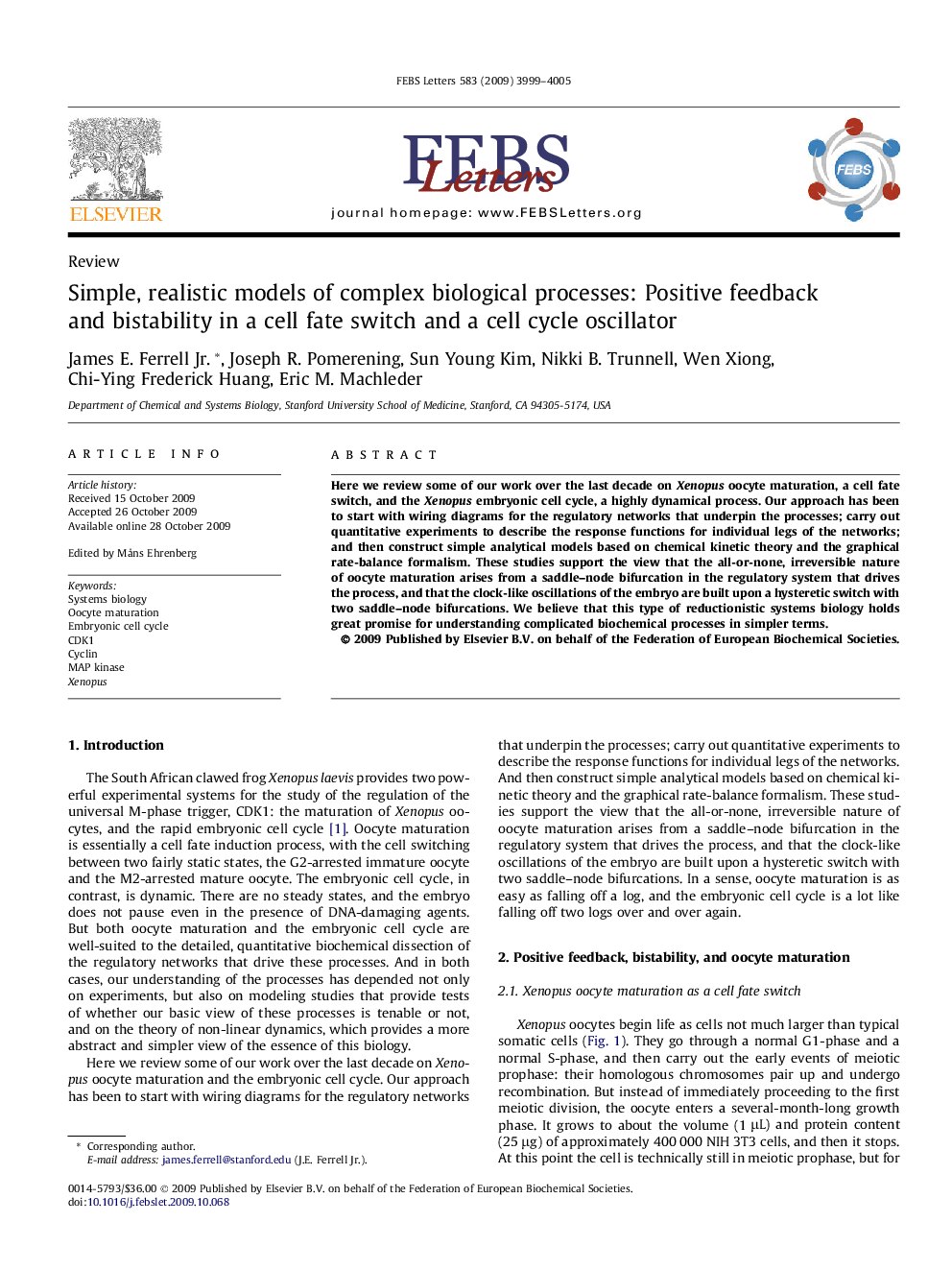| Article ID | Journal | Published Year | Pages | File Type |
|---|---|---|---|---|
| 2049613 | FEBS Letters | 2009 | 7 Pages |
Here we review some of our work over the last decade on Xenopus oocyte maturation, a cell fate switch, and the Xenopus embryonic cell cycle, a highly dynamical process. Our approach has been to start with wiring diagrams for the regulatory networks that underpin the processes; carry out quantitative experiments to describe the response functions for individual legs of the networks; and then construct simple analytical models based on chemical kinetic theory and the graphical rate-balance formalism. These studies support the view that the all-or-none, irreversible nature of oocyte maturation arises from a saddle–node bifurcation in the regulatory system that drives the process, and that the clock-like oscillations of the embryo are built upon a hysteretic switch with two saddle–node bifurcations. We believe that this type of reductionistic systems biology holds great promise for understanding complicated biochemical processes in simpler terms.
